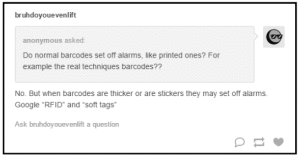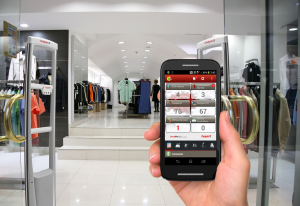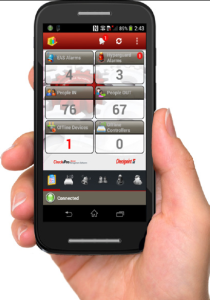 For Retailers there are a number of scary things that happen when the sun goes down. As we get into fall it becomes darker, earlier. This can become problematic for us. We have issues that get magnified with darkness that concerns employee/customer safety and the safety and security of our businesses. There are the usual concerns of employees walking to their cars after closing and the like. I want to bring up some that you may have not considered.
For Retailers there are a number of scary things that happen when the sun goes down. As we get into fall it becomes darker, earlier. This can become problematic for us. We have issues that get magnified with darkness that concerns employee/customer safety and the safety and security of our businesses. There are the usual concerns of employees walking to their cars after closing and the like. I want to bring up some that you may have not considered.
Employees – Are you taking your deposit after closing? Night makes this a much more dangerous task. Consider changing this to mid-day. Take it at lunch time. Lock the deposit into the safe overnight. Then take it during the day when there is less risk. Safes are not very expensive. $400 will get you a decent safe. Bolt it to the floor so someone does not steal the safe. When you take the deposit to the bank conceal it in something other than the bank bag. Let’s not make it too obvious.
Robbery – Many of us never discuss this with our folks, we should. What is your plan? Do they understand that their safety and the safety of your customers trump everything else? If you are not sure what you should do or say, contact us. I can send you a draft policy and some materials you can use (free of charge and I am not going to try to sell you anything).
Customer and Employee Safety – Yes you could be liable for something that happens while on your property. This includes your parking lot. Even if you are leasing in a strip center. If there are lights out in the parking lot or if it is poorly lit then do or say something. An email to the management company or property owner will put them on notice that you have a concern. If you have control, get it fixed. If there are people hanging around that you are uncomfortable with, then contact the Police. Ask to meet with a Sgt. or Lt. over your area. They would rather prevent an issue than deal with the results. If the department has public business meetings, you should attend. This will give you information on crime trends in your area and ideas on how to combat them.
Speaking of the Police, have you taken the time to make acquaintances with the Police Officers working your area? Do they know that you always have a cup of coffee available and want their presence in your store? Do they know that you encourage and support their efforts? A uniform officer and a patrol car in the area of your business goes a long ways to preventing problems.
As a former Police Officer, I can tell you that these things mean a lot to them. The majority of contact they have with people is with criminals and victims. Normally they do not see the rest of us as we are not their normal “customers”. Especially in today’s times a kind word, show of support and asking for their opinion and guidance mean a lot to them. Do this enough and when you really do need them, They will be responding to the face of a person they know instead of an address.
Remember, those Officers, their spouses and friends are also your potential customers.
Shoplifters – Remember that shoplifters need one thing to ply their craft: concealment. Even if you have a Checkpoint System make sure that your store is brightly lit, that there are no hidden spots that make a shoplifter feel warm and fuzzy about concealing merchandise. Make sure that your folks fully understand your vision of customer service. Staff that display good customer service skills will shut off most impulse shoplifters. Consequently good customer service skills are not just a tool for sales but a weapon against shoplifting.
Customers that have Checkpoint Systems that LPSI installed can always schedule a free, live on-line shoplifting seminar. We are happy to help. October is a great time to schedule this before the holiday season gets in full swing. This will help raise your staff’s shoplifting awareness for the holidays.
Let us know, if we can help you get ready for your holiday selling season!


 eir knowledge to others who may be new to the game. Much like a tenured LP manager taking a green agent under their wings.
eir knowledge to others who may be new to the game. Much like a tenured LP manager taking a green agent under their wings.










